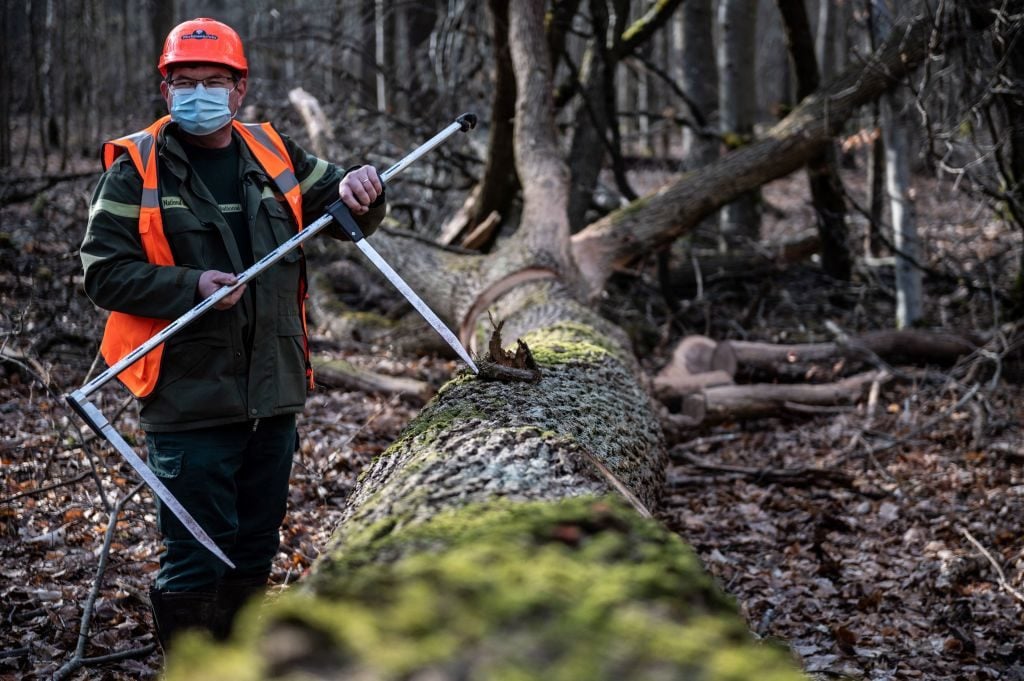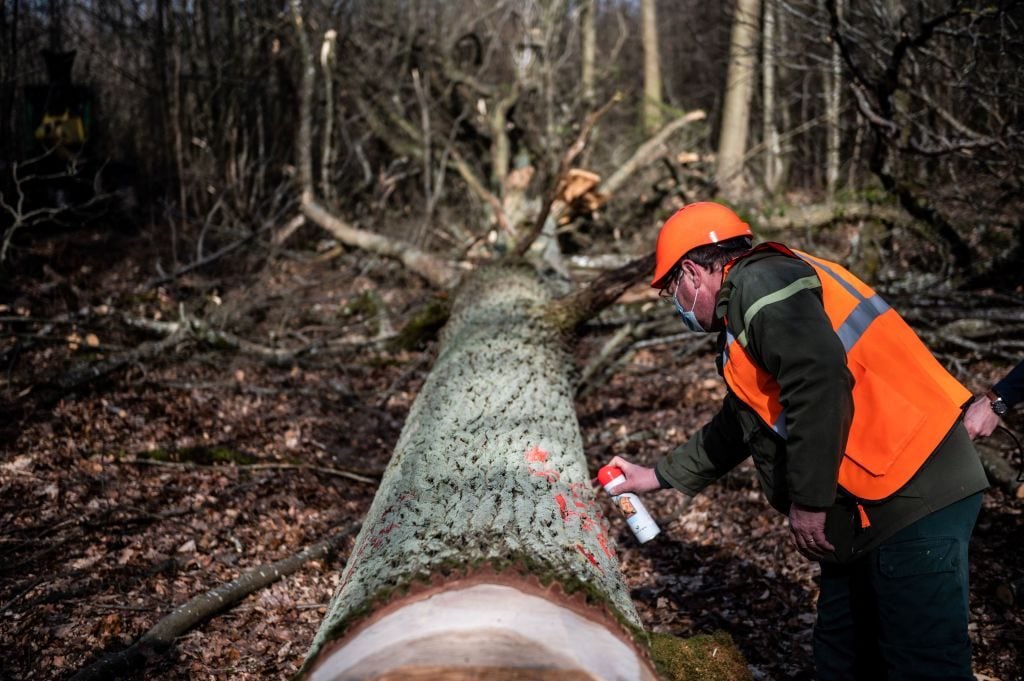Art World
Dozens of 150-Year-Old Oak Trees Have Been Felled to Rebuild the Destroyed Spire at the Cathedral of Notre Dame
Around 1,000 oaks will be needed to restore the spire, which will be rebuilt to look as it did before the fire.

Around 1,000 oaks will be needed to restore the spire, which will be rebuilt to look as it did before the fire.

Naomi Rea

The architects responsible for rebuilding the Notre Dame cathedral in Paris have identified the first 85 ancient oak trees in French public forests that will be used to rebuild the spire of the fire-gutted building.
Experts have felled 59 of the trees at the Villefermoy forest in the Seine-et-Marne region, and a further 26 oaks will be donated by four state-owned forests managed by the National Forestry Office. The massive restoration effort will need 1,000 French oak trees in total.
The oaks, which are around 150 years old, were chosen after French president Emmanuel Macron declared last summer that the gothic spire would be rebuilt just as it was before the fire, dismissing proposals for a more contemporary reconstruction. A call was put out to public and private woodlands for French trees more than a century old.
The cathedral’s vast wooden-and-lead spire collapsed during the fire that ravaged it in April 2019. The structure, designed by the French architect Eugene Viollet-le-Duc, was added to the medieval cathedral in the 19th century, and was made from carved oak from the Champagne region, as well as 250 tons of lead.

A lumberman works on the felling of oak trees selected to be use in the reconstruction of Notre-Dame de Paris Cathedral the Villefermoy forest, near Echouboulains, South-East of Paris, on March 15, 2021. Photo by Martin Bureau/AFP via Getty Images.
The project has not been without controversy. A petition signed by more than 40,000 activists called the felling of the trees “ecocide,” but officials say the oaks were slated to have been cut down anyway as part of routine forest maintenance.
“We had decided to cut them down to promote other trees around and regenerate the forest,” forestry experts from Villefermoy told the French outlet Le Parisien. “We cut the big for the benefit of the small.”
For Villefermoy, the decision has historical precedent: its oaks have been used to build churches since the Middle Ages. Among them are the church of Saint-Germain-des-Près, just a stone’s throw from Notre Dame.
The timber will be transported to sawmills this month and will be worked on through September before being submitted to master carpenters for inspection. It will then be dried for between 12 and 19 months before being assembled in 2022.
The lengthy processes casts doubt on the plan to restore the cathedral before the 2024 Paris Olympics, as Macron originally promised in 2019. Conservation experts and French officials were quick to row back the president’s ambitious five-year deadline, especially after it was decided that the spire would mimic the original style, which will require builders to be trained in ancient and modern building methods.
The cathedral’s rector, Patrick Chauvet, told AP last Friday that he did not expect the restoration of the nave to be done before at least 15 years’ time, adding: “I can guarantee that there’s work to do.”